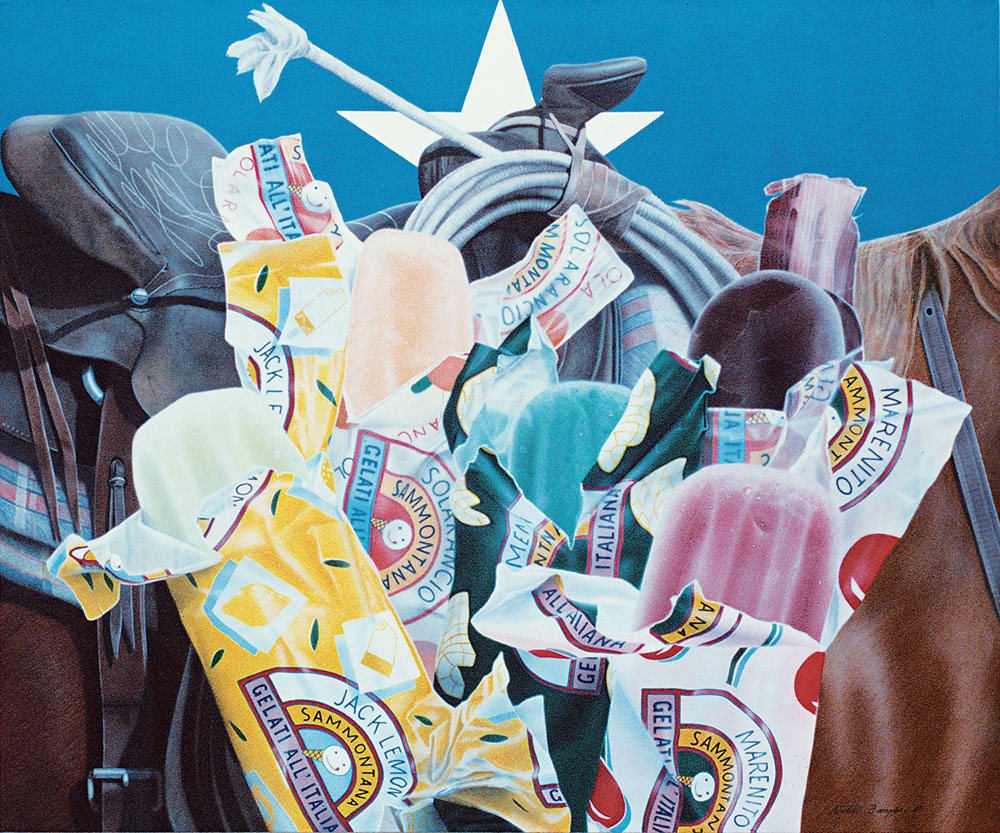




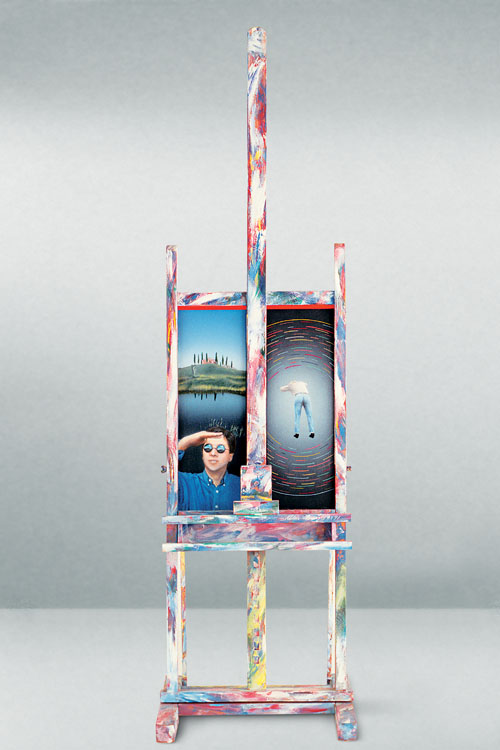
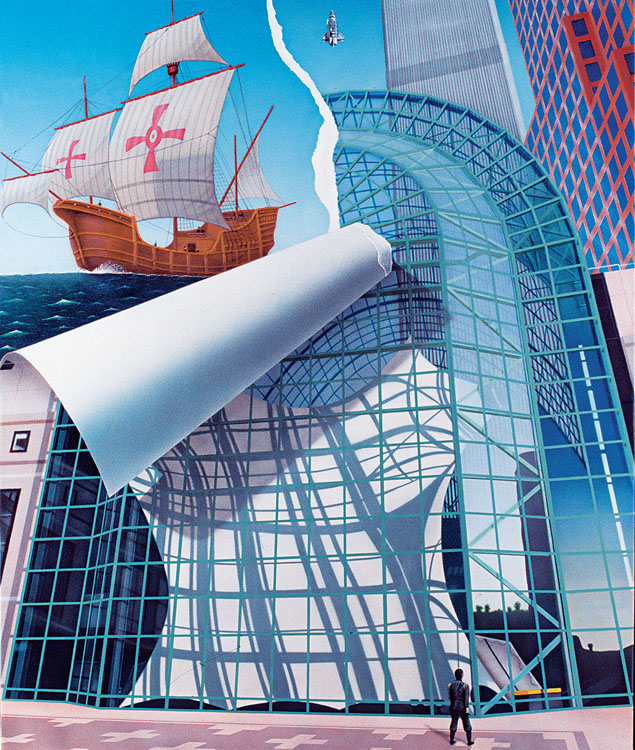


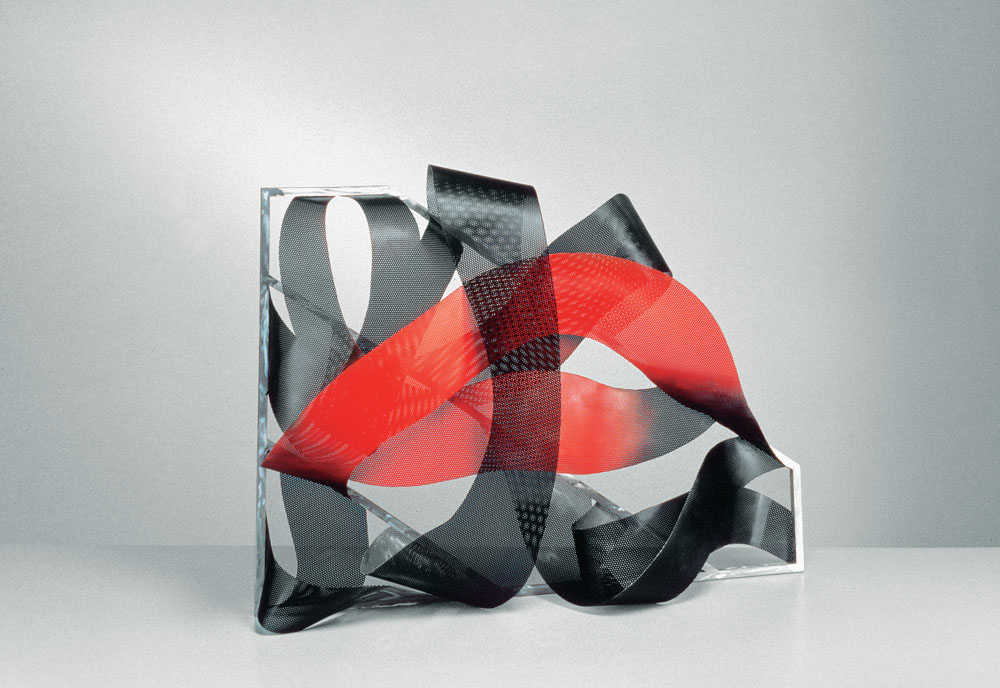
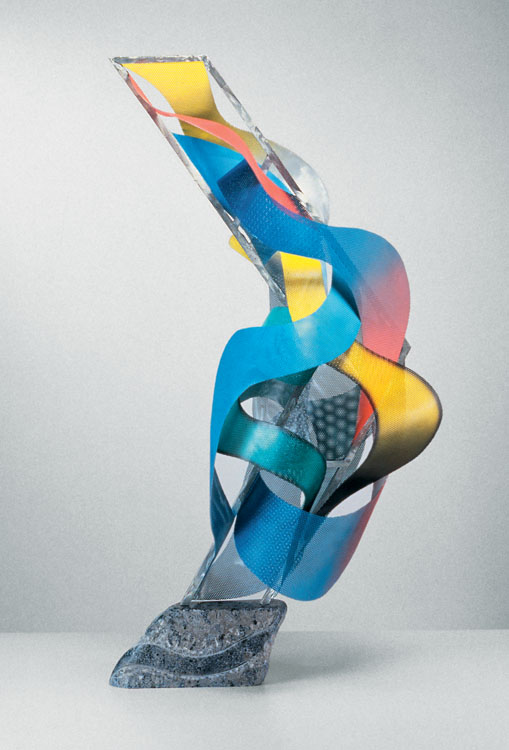
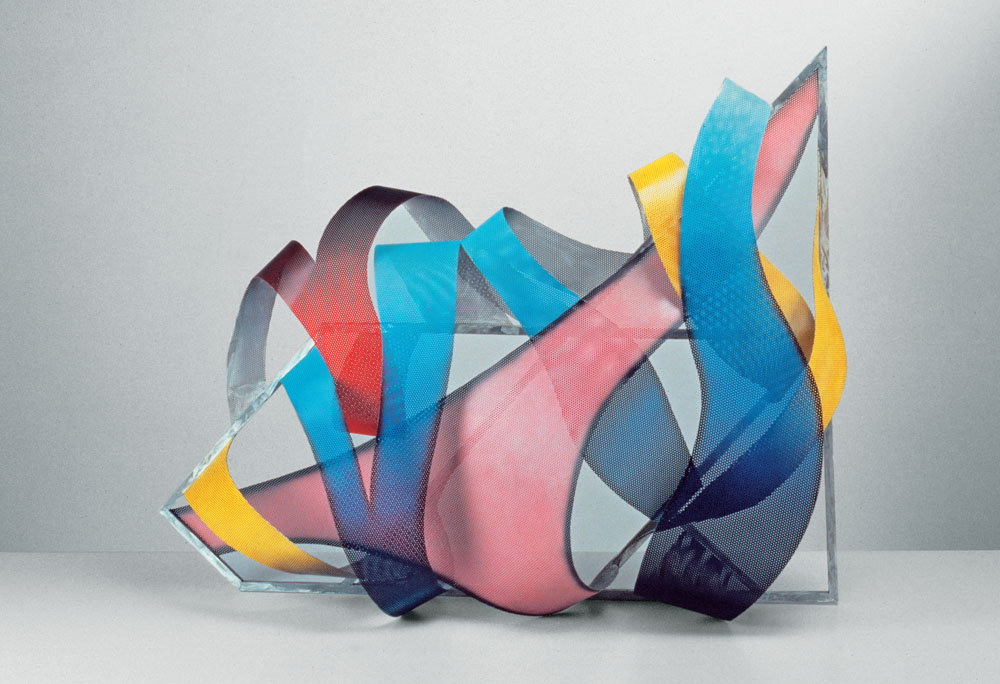

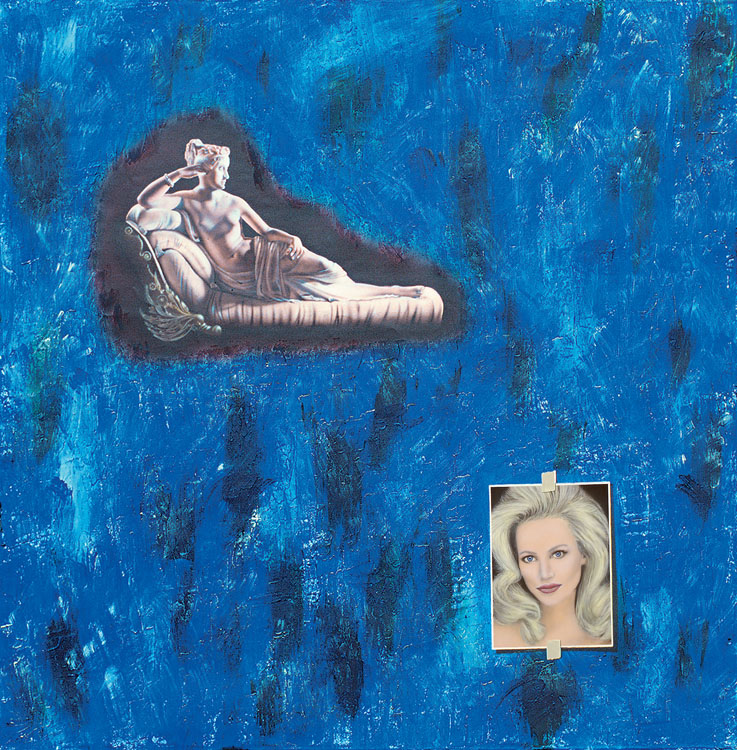

Nolde Banziger's photo realistic paintings, whimsically juxtaposing images of
antiquity with those of the modern world, had been successfully exhibited
around the world, and would have entitled the artist to take a well deserved
break. But nothing was further from his mind than to rest on his laurels,
instead, in 1990, he took a second residence in Pietrasanta, and once again was
in search of a new artistic vocabulary. Two dimensions had, up until now,
provided enough space to express his emotions and fantasies. But the third
dimension was calling. He felt sculpture was an important medium to add more
depth to what he was doing, and in this way, began a new adventure.
He had earned the attention of the United States Christopher Columbus
Quincentennary Commission through his thought provoking renditions of images
from different centuries, and was chosen as the official artist for the event
they were planning. Based on his large canvasses honoring Columbus's discovery
of the New World, the jubilee became a catastrophe of political controversy
through the quarreling of its organizers, and this threw Banziger into a vortex
of self doubt about his competence and direction as an artist. From this
uncertainty emerged a desire to master three dimensional works.
In the studios, where Michelangelo often spent time during his frequent trips
to Carrara, Banziger was inspired by what he saw. The powerful and yet graceful
'life' which Michelangelo was able to pull from these blocks of cold white
stone impressed him deeply, and convinced him, for the time being, to abandon
painting. He focused all his attention on mastering the third dimension. Once
again, he was upon the path of auto didactic training into new artistic
territory. A friend taught him how to weld, but right away he saw that iron and
steel, heavy and coarse materials, were not his 'thing'. His material of choice
was aluminum, combined with marble and granite. The foundation for his new
constructions was the stone, upon which he built an aluminum frame. Onto this
he welded perforated sheets of colored aluminum, snarling and intertwining them
with the frames themselves. The results were whimsical, elegant sculptures,
breaking the flow of light into a myriad of glimmering rays. The light
heartedness of these works earned him the recognition of critics and much
impressed his collectors. After a few years of very intense work, however, he
returned to painting, bringing with him a new knowledge of three
dimensionality, which became an integral part of his next series of paintings.
These new works incorporated metal artifacts into the surfaces of the
canvasses, giving them more depth. The next evolution in his work came from the
faded frescoed walls found everywhere in Tuscany. The colors of the hills and
the ambience surrounding his studio gave a new vibrancy to his work that hadn't
been there before. These 'quadros' are done in splendid monochromatic colors,
and have the jewel like texture of aged Italian frescoes, punctuated by a bit
of dry leaf, or an insect, that has floated onto the canvass before it was
completely dry.
Still further on, the artist gives us a glimpse into his new world by painting
scenes onto these frescoed surfaces, adding a dimension which makes us feel
these images are frozen in time. What we see are his personal life, his passion
for history; his private moments, thoughts, feelings and conversations, which
he shares with us through his work. Executed in a classical Banziger style,
these elements introduce tension into the otherwise peaceful frescoed surfaces.
Tuscany and New York will always play the leading roles in Nolde Banziger's
personal and artistic life.